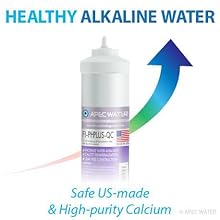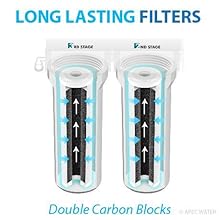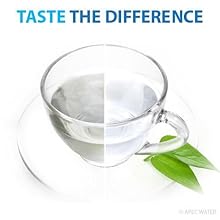












💧 Elevate your hydration game with pure, alkaline perfection!
The APEC WATER RO-PH90 is a premium 6-stage reverse osmosis system that delivers up to 90 gallons per day of ultra-pure, alkaline-enhanced water. Certified by WQA to remove over 1,000 contaminants including heavy metals and VOCs, it features durable US-made filters and a luxury lead-free faucet. Designed for under-sink installation, this system ensures long-lasting, great-tasting water with a natural spring-like pH boost, backed by lifetime support and warranty options.








| Brand | APEC WATER |
| Special Feature | Reduce TDS |
| Product Dimensions | 15"L x 7"W x 18"H |
| Package Information | Tube |
| Installation Type | Under Sink |
| Power Source | Manual (Water Pressure) |
| Model Name | RO-PH90 |
| Maximum Flow Rate | 0.06 Gallons Per Minute |
| Upper Temperature Rating | 360 Degrees Fahrenheit |
| Supported Water TDS Level Maximum (PPM) | 2000 |
| UPC | 854961005846 |
| Global Trade Identification Number | 00854961005846 |
| Manufacturer | APEC Water Systems |
| Manufacture Year | 2023 |
| Part Number | RO-PH90 |
| Item Weight | 27.2 pounds |
| Country of Origin | USA |
| Item model number | RO-PH90 |
| Is Discontinued By Manufacturer | No |
| Size | RO-PH90 |
| Color | White |
| Style | RO System |
| Pattern | Water Softener |
| Item Package Quantity | 1 |
| Special Features | Reduce TDS |
| Batteries Included? | No |
| Batteries Required? | No |
Trustpilot
1 week ago
3 weeks ago